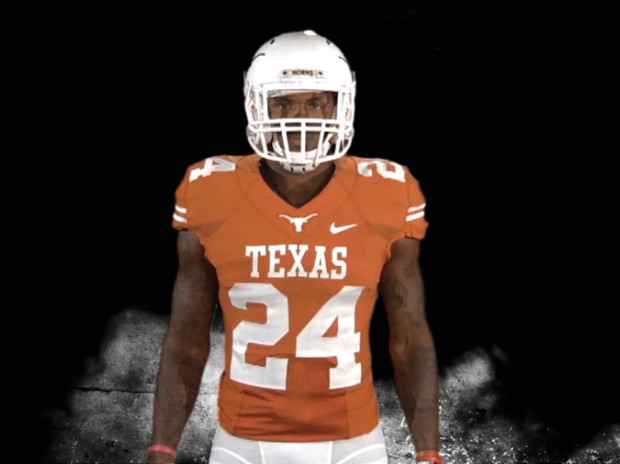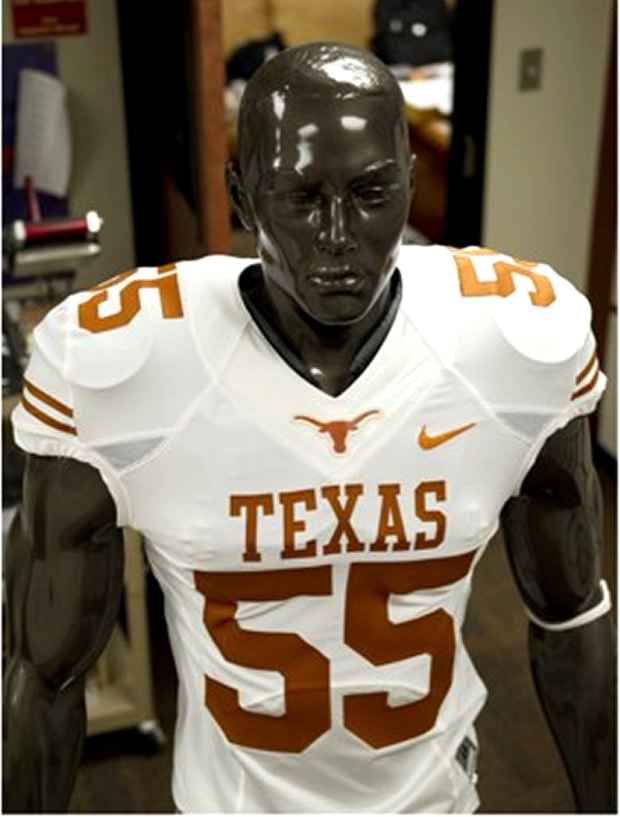Back to the College Football Uniforms
The University of Texas annually tops Forbes’ list of most valuable college football teams and Nike takes pride in outfitting the Longhorns with state-of-the-art gameday apparel.
But there are rules when you’re the official supplier of one of the game’s most storied programs. Burnt orange tops and white helmets are Texas football staples, as is the “Longhorns” logo that first made its appearance on gameday shells in 1961.
For decades, Texas has had two sets of jerseys — burnt orange with numbers and white with burnt orange numbers — and one set of classic, stripe-free white pants. Burnt orange became the school’s official shade of orange in 1928 after coach Clyde Littlefield wanted “a darker orange that wouldn’t fade” for his football team. Coach Darrell Royal revised the color into what it is today in the 1961.
In 2009, Texas let the swoosh make subtle Pro Combat adjustments for a game against Texas A&M, but none apparent to the naked eye. Pants featured a “State of Texas” burnt orange patch on the hip and “TEXAS” script on the back waist. Jerseys had the same “TEXAS” word mark above burnt orange numerals, but numbers were removed from the sleeves.
Only twice over the last 25 years has Texas differentiated from its white shell-white facemask-burn orange logo helmet and one was the Pro Combat game. Players’ numbers were applied above the Longhorn for the first time since the mid 1960s. Texas’ helmets have always been white, but decals have changed a handful of times since the “Longhorns” logo’s debut.
Texas donned gray facemasks until 1977 and has worn white ever since. To commemorate the program’s first-ever trip to the Cotton Bowl in 1982, Texas applied a Cotton Bowl logo and script above the Longhorn decal on its shells.
We’ve already seen them in practice, but how long will it take Texas to give Nike permission to use black and burnt orange jerseys or black accents on pants for gameday? Even burnt orange pants would be a refreshing look for a home alternate.


